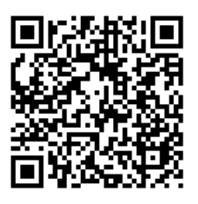Gold in Islamic finance
Gold has a long association with Islamic finance. For centuries, the gold Dinar was the currency and trading standard of the Islamic world. But as Islamic finance grew and developed, so did the need for clarity around the Shari’ah treatment of gold.
In 2016, the rules for trading gold were codified in a single Standard: the AAOIFI Shari’ah Standard on gold. This removed one of the barriers preventing the development of gold-backed products in Islamic finance.
Since then, the World Gold Council has been working with Islamic banks and other financial institutions to further develop this market. As part of our engagement, in 2018 we partnered with global research agency Kantar TNS to conduct a comprehensive survey of 4,000 retail investors in four predominantly Muslim markets – Saudi Arabi (KSA), United Arab Emirates (UAE), Turkey and Malaysia – to gauge their attitude and approach towards Islamic investing and gold.2
Islamic investment trends
Islamic finance is a large market. In 2017, total assets surpassed US$2tn for the first time. And it is growing: some estimates suggest a long-term compound average growth rate of over 9%.3
This positive outlook is reflected in the findings from our research. Two-thirds of those we surveyed would prefer their investment holdings to include Islamic products. Just under one third, on average, would prefer to hold purely Islamic investments (Chart 1).
1In 2016, the Accounting and Auditing Organisations for Islamic Financial Institutions (AAOIFI) and the World Gold Council collaborated to develop an international Shari’ah Standard for gold. For more information, visit shariahgold.com
2For detail on the research methodology and sample, see World Gold Council, 'Gold in Islamic finance: retail investor insights’, 2018
3IFSB, Islamic Financial Services Industry Stability Report, 2018
Copyright and other rights
© 2019 World Gold Council. All rights reserved. World Gold Council and the Circle device are trademarks of the World Gold Council or its affiliates. All third-party content is the intellectual property of the respective third party and all rights are reserved to such party. World Gold Council does not guarantee the accuracy or completeness of any information and does not accept responsibility for any losses or damages arising directly or indirectly from the use of this information.
Reproduction or redistribution of any of this information is expressly prohibited without the prior written consent of World Gold Council or the appropriate intellectual property owners.
World Gold Council or its affiliates are affiliated with SafeGold.
This information is not a recommendation or an offer for the purchase or sale of gold or any products, services, or securities.
This information contains forward-looking statements which are based on current expectations and are subject to change. Forward-looking statements involve a number of risks and uncertainties. There is no assurance that any forward-looking statements will be achieved.
